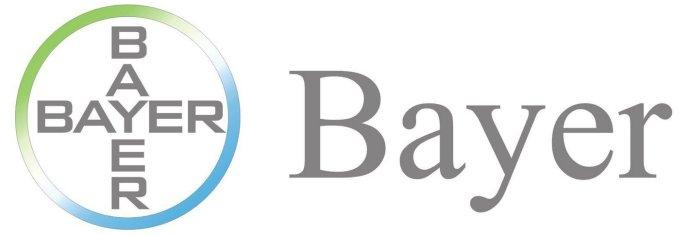fiercebiotechApril 03, 2019
Tag: AACR , Bayer , Loxo , Inhibitor
Bayer has shared preliminary clinical data on the second TRK inhibitor it licensed from Loxo Oncology. The phase 1 trial linked the drug to a 45% response rate in a subpopulation of solid tumor patients resistant or intolerant to a prior TRK inhibitor.

Loxo began work on the candidate, then known as LOXO-195, in light of experience with its first TRK inhibitor. That drug, Vitrakvi, achieved a 75% response rate in solid tumor patients with NTRK gene fusions and went on to become the first FDA-approved TRK inhibitor. But the development program showed the approach has limitations.
"We know that the existing generation of TRK inhibitors are very effective but that there is going to be a portion of patients who develop acquired resistance," Memorial Sloan Kettering Cancer Center’s David Hyman said.
LOXO-195, now known as BAY 2731954, moved swiftly into the clinic on the strength of evidence that it has a structure capable of maintaining potency despite the presence of resistance mutations. Bayer picked up rights to Vitrakvi and LOXO-195 in stages on either side of Eli Lilly’s acquisition of Loxo, starting with a deal worth $400 million upfront.
Now, Bayer has early evidence that the follow-up TRK inhibitor can address the unmet need created by the limitations of Vitrakvi. Physicians treated 31 patients with BAY 2731954 across a phase 1 and compassionate use program implemented for people unable to join the study for logistical or medical regions. The patients had NTRK fusions but were resistant or intolerant to a prior TRK drug.
As of the pre-American Association for Cancer Research annual meeting cutoff, Bayer had efficacy data on 29 patients. Ten of the patients had confirmed partial responses—resulting in an ORR of 34%—but that paints an incomplete picture of the effect of BAY 2731954.
Nine of the 10 responses occurred in the 20 patients with TRK-resistance mutations. Another six patients with TRK-resistance mutations had stable disease with lesser degrees of tumor regression. In the genetic subgroup, the ORR was 45%. In people without confirmed TRK-resistance mutations, the ORR was 11%.
Hyman, who worked on the trial, said the results suggest BAY 2731954 is "quite active" in patients with TRK-resistance mutations and provide preliminary proof of efficacy. The divergence between the results in people with and without resistance mutations suggests efficacy may be limited to a certain group of patients, but Hyman wants to see more data before making that conclusion.
"I don't think we're ready yet, given that that was only nine patients, to say that the drug would only work if you identify a resistance mutation. But preliminarily that seems to be where the highest degree of activity is. That's consistent with expectations," Hyman said.
Encouraged by the results, Hyman and his collaborators are now working to finalize the recommended phase 2 dose. At high doses, the trial has hit dose-limiting toxicities consistent with inhibition of TRK function in the brain, such as dizziness and ataxia. The molecule is "much, much better tolerated" at lower doses, according to Hyman.
Once the dose is finalized, the researchers will put together a clinical development plan, taking into account how regulatory authorities perceive the data. One option is to focus on the subpopulation of high responders.
"There's certainly the opportunity to introduce a diagnostic which could identify patients with these resistance mutations. That is one possible development path for this drug," Hyman said.
Loxo teamed up with Illumina to develop an NTRK fusion companion diagnostic for Vitrakvi. But, at this stage, it is unclear whether a test for TRK-resistance mutations will be needed. The answer will rest, in part, on the proportion of patients who are resistant to first-generation TRK inhibitors but lack the mutations thought to underpin resistance.
"I don't think we have a great handle on that yet," Hyman said. "We're still trying to figure out exactly what represents the best next step in development."
BAY 2731954 is advancing in parallel to TP Therapeutics’ repotrectinib, a ROS1/TRK/ALK inhibitor that could also help patients resistant to Vitrakvi. As of the end of October, TP had tested repotrectinib in two patients with NTRK fusion-positive tumors previously treated with TKI inhibitors. One patient, who developed a resistance mutation following treatment with drugs including Roche’s ROS1/TRK/ALK inhibitor entrectinib, had a partial response that lasted nearly 10 months.
Register as Visitor to CPhI China 2019!

-----------------------------------------------------------------------
Editor's Note:
To apply for becoming a contributor of En-CPhI.cn,
welcome to send your CV and sample works to us,
Email: Julia.Zhang@ubmsinoexpo.com.


Contact Us
Tel: (+86) 400 610 1188
WhatsApp/Telegram/Wechat: +86 13621645194
Follow Us:




 Pharma Sources Insight January 2025
Pharma Sources Insight January 2025


